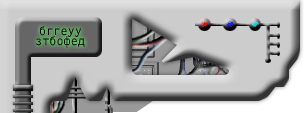|
Napier, John
(1550-1617),
Napier, John (1550-1617), Scottish mathematician, born in Merchiston Castle in Edinburgh, and educated at the University of St. Andrews. He became an adherent of the Reformation movement in Scotland while still at college, and in later years he took an active part in Protestant political affairs. He was the
author of A Plaine Discovery of the Whole Revelation of Saint John (1593), the first important Scottish interpretation of
the Bible.
Napier is
best known as the inventor of the first system of logarithms, described in Canonis Descriptio (1614). The common and natural
systems of logarithms used today do not employ the same base as Napier's logarithms, although natural logarithms are sometimes
called Napierian logarithms. Napier was one of the first, if not the first, to use the decimal point in expressing decimal
fractions in a systematic way and according to the modern system of decimal notation. He also invented mechanical systems
for performing arithmetical computations.
|
|
Blaise, Pascal
(1623-62)
Pascal, Blaise (1623-62), French philosopher, mathematician, and physicist considered
one of the great minds in Western intellectual history.
Pascal was born in Clermont-Ferrand on June
19, 1623, and his family settled in
Paris in 1629. Under the tutelage of his father, Pascal soon proved
himself a mathematical prodigy, and at the age of 16 he formulated one of the basic theorems of projective geometry, known
as Pascal's theorem and described in his Essai pour les coniques (Essay on Conics, 1639). In 1642 he invented the first mechanical
adding machine. Pascal proved by experimentation in 1648 that an increase or decrease in the surrounding atmospheric pressure
determines the level of the mercury column in a barometer rather than by a vacuum, as previously believed. This discovery
verified the hypothesis of the Italian physicist Evangelista Torricelli concerning the effect of atmospheric pressure on the
equilibrium of liquids. Six years later, in conjunction with the French mathematician Pierre de Fermat, Pascal formulated
the mathematical theory of probability, which has become important in such fields as actuarial, mathematical, and social statistics
and as a fundamental element in the calculations of modern theoretical physics. Pascal's other important scientific contributions
include the derivation of Pascal's law or principle, which states that fluids transmit pressures equally in all directions,
and his investigations in the geometry of infinitesimals. His methodology reflected his emphasis on empirical experimentation
as opposed to analytical, a priori methods, and he believed that human progress is perpetuated by the accumulation of scientific
discoveries resulting from such experimentation.
| In the 1670s,
a German Baron called Gottfried von Leibniz (sometimes von Leibnitz) took mechanical calculation a step beyond his predecessors.
Leibniz, who entered university at fifteen
years of age and received his bachelor's degree at seventeen, once said: "It is unworthy of excellent men to lose hours
like slaves in the labor of calculation, which could be safely relegated to anyone else if machines were used." |
|

Gottfried von Leibniz.
Copyright (c) 1997. Maxfield & Montrose Interactive Inc.
|
| a |
|

Leibniz's Step Reckoner.
Courtesy of IBM
|
|
Leibniz
developed Pascal's ideas and, in 1671, introduced the Step Reckoner, a device which, as well as performing additions
and subtractions, could multiply, divide, and evaluate square roots by series of stepped additions. |
| a |
| Leibniz also strongly
advocated the use of the binary number system, which is fundamental to the operation of modern computers. |
|
Pascal's and Leibniz's
devices were the forebears of today's desk-top computers, and derivations of these machines continued to be produced until
their electronic equivalents finally became readily available and affordable in the early 1970s. |
| a |
|

